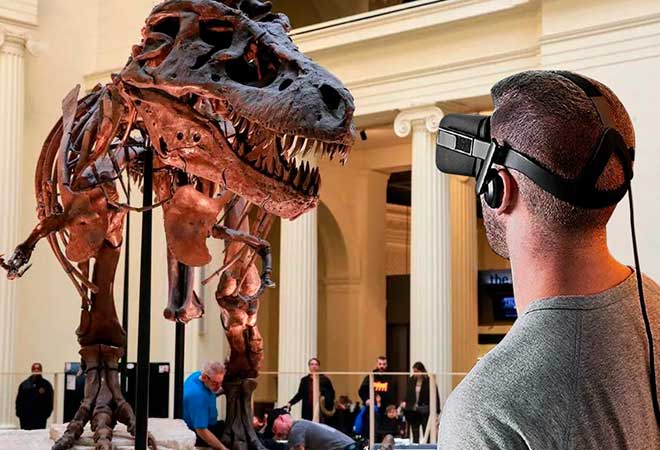With the help of new technologies, natural and art-historical museums are exploring incredible dimensions. Museum visitors are transported to a different world with just a few movements. You choose a program on your smartphone, attach the phone to the body of the virtual reality glasses, put the device on your head, and use the wheel to adjust the sharpness of the picture. And now you climb the cumbersome stone stairs (in virtual reality) to the inside of the building. First, you pass the hall, then you go up another staircase, then down the corridor, and here you can decide whether you want to continue with the museum as a programmed tour, choose the route to the masterpieces, or whether it is better to move at your discretion.
Virtual reality (VR), immersion in a computer-generated, interactive virtual environment, has made its way into German museums. It is demonstrated, for example, by "Time Travel," the virtual reality program of the Städel Museum in Frankfurt am Main. The program was developed by a team around Jochen Sander, the museum's deputy director. To use this program, you need to have virtual reality glasses made by Samsung. A unique feature of the virtual tours made possible through this program is that visitors are not guided through an actual three-dimensional reconstruction of the museum but are introduced to the exhibition halls as they looked in 1878 when the Steel Museum was opened on the banks of the river Main.
As the visitor walks through the old rooms, he feels as if he can hear the creaking of the wooden floor. He sees paintings that were then still hanging densely on the walls and learns that some of the artistic images displayed as masterpieces have been in the museum's storerooms for many years. The "Journey Through Time" program shows how the appreciation of works of art has changed over the years and shows that the way works of art were presented in the 19th century was also quite different than today.
Research project "Mobile app Steedel"
The basis for the virtual tours offered by the "Journey Through Time" program was a research project in which Jochen Sander carefully studied the history of the museum's exhibitions. Next to the program, an Internet page was created at zeitreise.staedelmuseum.de, which further reveals the museum's origins. Before the philanthropist Johann Friedrich Staedel began constructing a building for the exhibitions on the banks of the river Main, he displayed his collections - which his contemporary Johann Wolfgang Goethe was also delighted with within his private homes. The project also provided an opportunity to gather much additional information. Where a virtual reality program offers a sense of the past playfully, an Internet page provides in-depth knowledge.
Frankfurt's Städel Museum is not the only museum in the German-speaking area that is experimenting with virtual reality technology. On the other side of town, at the Senckenberg Natural Museum, since mid-November, visitors can borrow virtual reality glasses that take them on a journey back in time in the dinosaur hall. The glasses turn the museum hall into a landscape with ferns and other plants, and the diplococcus skeleton comes to life and begins to flick.
The Museum of Nature in Berlin also brought a dinosaur to life using virtual reality technology. The more than 13-meter-long skeleton of the giraffotitan is the most attractive exhibit in the hall with relics. Using 3D animation, this prehistoric giant moves, extending its long neck across the room, looking at the observer, and making growling noises. You can experience and see the virtual giraffotitan through Google or 360-degree video and on the online YouTube portal.

